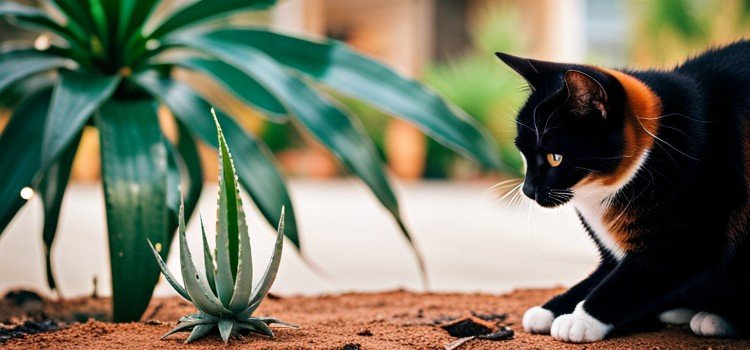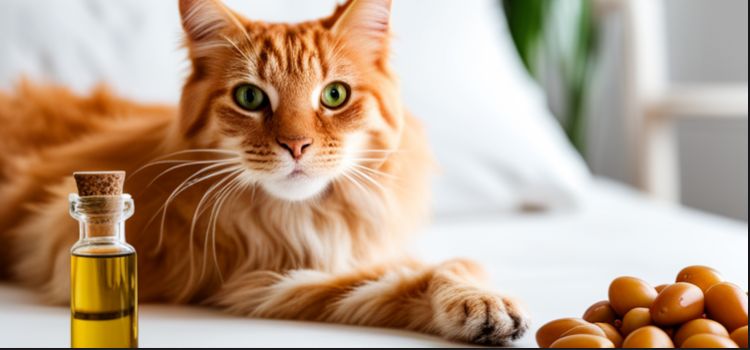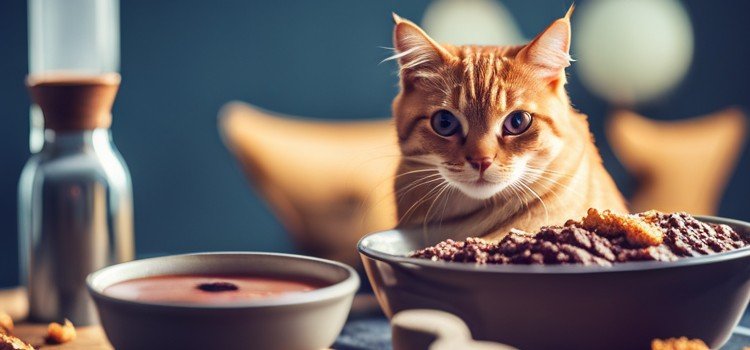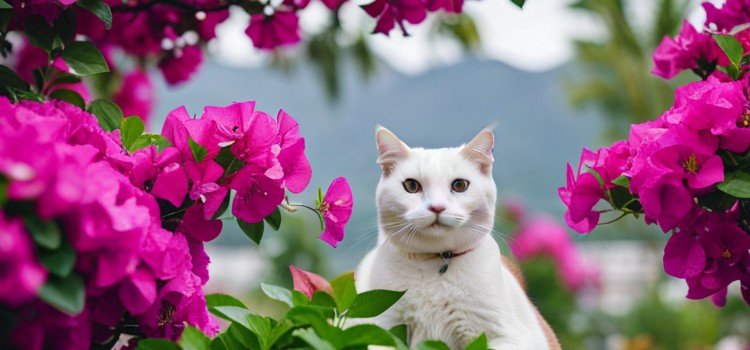As an Amazon Associate committed to the mission of improving the lives of our readers, Live-Clear.com receives a small commission from eligible purchases made through our affiliate links. This revenue enables us to keep producing insightful articles and other material.
Pink Muhly Grass, with its stunning, vibrant pink plumes, is a popular choice for many garden enthusiasts. Its elegant appearance and low maintenance requirements make it a delightful addition to gardens and landscapes. However, as a responsible pet owner, you may be concerned about the safety of your furry friend when introducing new plants to your garden. In this comprehensive guide, we’ll delve into the question, “Is Pink Muhly Grass toxic to dogs?” We’ll go over what pink muhly grass is, how it can affect dogs, and what pet owners can do to protect their puppies.

Understanding Pink Muhly Grass
What is Pink Muhly Grass?
Pink Muhly Grass, scientifically known as Muhlenbergia capillaris, is a native grass species in the southeastern United States. It’s renowned for its eye-catching, airy, and pinkish-purple plumes that appear in the late summer and autumn. This ornamental grass can add a touch of elegance to any garden, making it a popular choice among homeowners and landscapers.
Not only is Pink Muhly Grass visually appealing, but it also serves a functional purpose in landscaping. Its deep root system helps prevent soil erosion and improves water retention. Additionally, this grass is relatively low-maintenance and can thrive in various soil types, making it a versatile option for gardens of all sizes.
Common Uses in Landscaping
Pink Muhly Grass is used in landscaping for various purposes, such as:
- Ornamental Borders: It is commonly used as a border plant or in mass plantings to add color and texture to garden designs.
- Erosion Control: Due to its deep root system, it helps prevent soil erosion in sloped areas.
- Wildlife Attraction: It can attract wildlife, such as birds and insects, to your garden.
- Low Maintenance: Pink Muhly Grass is relatively low maintenance, making it an ideal choice for an aesthetically pleasing but easy-to-care-for plant.
Additionally, Pink Muhly Grass is drought-tolerant, requiring minimal watering once established. This makes it an excellent option for conserving water in their landscaping. Furthermore, its feathery plumes create a stunning visual display in the fall, adding interest and beauty to any garden or landscape.
Toxicity of Pink Muhly Grass
Now, let’s address the question: Is Pink Muhly Grass toxic to dogs?
Potential Toxic Compounds
Pink Muhly Grass is generally considered non-toxic to dogs. It does not contain compounds known to be harmful or dangerous to canines. This is great news for dog owners who want to enjoy the beauty of this grass in their garden without worrying about their pet’s safety.
However, while Pink Muhly Grass itself isn’t toxic, there are other factors to consider.
One factor to consider is that dogs may have allergic reactions to grass, including Pink Muhly Grass. Some dogs may develop skin irritations or gastrointestinal issues if they come into contact with the grass or ingest it. You must monitor your dog’s behavior and consult a veterinarian if you notice any unusual symptoms. Additionally, it is always a good idea to supervise your dog while they are in the garden to prevent them from consuming large amounts of any plant material.
Ingestion of Plant Material
While the grass is not toxic, ingesting a significant amount of any plant material can lead to gastrointestinal upset in dogs. This might result in symptoms like vomiting, diarrhea, or mild digestive discomfort. Dogs are known to chew on grass occasionally, but Pink Muhly Grass is not a plant that dogs commonly consume. Still, it’s essential to keep an eye on your pet when introducing any new plants to your garden.
If you notice any unusual behavior or symptoms after your dog has ingested plant material, it is recommended to consult with a veterinarian for further evaluation and guidance. Additionally, providing a safe and designated area for your dog to explore and play in your garden can help prevent them from consuming potentially harmful plants.
Allergies
Some dogs may have allergies to grasses in general. While Pink Muhly Grass is not a common allergenic plant, it’s essential to observe your dog for signs of allergies, such as itching, skin irritation, or sneezing, if they come into contact with the grass. If you notice any of these symptoms, it is best to consult with a veterinarian for proper diagnosis and treatment. They can help determine if your dog’s allergies are related explicitly to Pink Muhly Grass or if there may be other factors at play.
Taking precautions such as regularly cleaning and grooming your dog after outdoor activities can also help minimize the risk of allergic reactions.
Safety Tips for Dog Owners
Supervision
When introducing new plants to your garden, always supervise your dog to ensure they don’t consume excessive plant material. While Pink Muhly Grass is not toxic, it’s best to prevent your dog from chewing on plants. Ingesting large amounts of any plant material, including Pink Muhly Grass, can potentially cause gastrointestinal upset in dogs. You must be aware of your dog’s behavior around plants and intervene if you notice them showing excessive interest or attempting to chew on them. Additionally, providing your dog with plenty of appropriate chew toys and engaging in regular exercise can help redirect their chewing behavior away from plants.
Training
Training your dog to avoid chewing on plants is a good practice to ensure their safety in the garden. Use positive reinforcement and reward-based training methods to discourage plant consumption. Consistently praise and reward your dog when they show disinterest in plants or choose to chew on their designated toys instead. This will reinforce the desired behavior and help them understand what is acceptable. Additionally, consider using deterrent sprays or barriers around plants to discourage your dog from approaching or chewing on them.
Garden Design
If you’re still concerned about your dog’s interaction with pink muhly grass, you can strategically design your garden or landscaping to minimize their access to the grass. Fencing or barriers can also be effective in keeping your dog away from specific areas. Incorporating raised flower beds or planting the pink muhly grass in containers can also create physical barriers that make it more difficult for your dog to reach and chew on the grass. Additionally, providing alternative areas for your dog to play and explore, such as a designated dog-friendly zone, can redirect their attention away from the grass and towards more appropriate activities.
Consult a Veterinarian
If you suspect your dog has consumed an unusual amount of any plant or is showing signs of illness after being in the garden, consult your veterinarian. They can provide guidance and treatment if necessary. It is essential to seek professional advice as some plants can be toxic to dogs and may cause serious health issues. Your veterinarian will be able to assess the situation and recommend appropriate steps to ensure your dog’s well-being. Remember, prevention is critical to keeping your dog safe in the garden.

Landscaping Ideas with Pink Muhly Grass
Now that we’ve established that Pink Muhly Grass is safe for dogs let’s explore some creative landscaping ideas to incorporate this beautiful plant into your garden.
Pink Muhly Grass Border
Create a stunning border around your garden or walkway by planting Pink Muhly Grass in a neat row. The vibrant pink plumes will contrast beautifully against greenery and other flowers in your garden. Your dog can enjoy this visual delight without safety concerns. Another idea is to use Pink Muhly Grass as a focal point in your garden. Plant it in clusters or as a standalone feature to create a stunning visual impact. It’s delicate texture and vibrant color will add depth and interest to your outdoor space, making it a perfect spot for your dog to relax and enjoy the view.
Mixed Plantings
Combine Pink Muhly Grass with other dog-friendly plants and flowers. Pair it with non-toxic options like lavender, coneflowers, and petunias. This will not only create a vibrant and pet-safe garden but also attract beneficial pollinators like bees and butterflies. The combination of Pink Muhly Grass with these dog-friendly plants and flowers will create a visually appealing and pet-safe garden that offers a variety of textures and colors. Additionally, beneficial pollinators like bees and butterflies will contribute to a thriving ecosystem in your outdoor space.
Elevated Planters
If you have a dog that loves to dig or chew on plants, consider elevating your Pink Muhly Grass in raised planters or hanging baskets. This not only adds a unique element to your garden but also keeps the grass out of reach from your furry friend. Elevated planters also provide better drainage for the Pink Muhly Grass, ensuring its health and longevity. Additionally, the raised height can create a visually dynamic display, adding depth and dimension to your garden.
Pathway Accents
Frame your garden pathways or walkways with Pink Muhly Grass. This adds a touch of elegance to your outdoor space and defines the walking area for you and your dog. It’s a beautiful way to enjoy the grass without worrying about your dog’s safety. Not only does the Pink Muhly Grass add beauty and elegance to your garden pathways, but it also serves as a natural border, keeping your dog from straying off the designated path. This allows you and your furry friend to enjoy a safe and visually pleasing stroll through your garden.
Natural Grass Dividers
Use Pink Muhly Grass as a natural divider in your garden to separate different sections or create visual interest. It can be a functional and aesthetic element that enhances the overall garden design. The soft and feathery texture of Pink Muhly Grass adds a touch of whimsy to your garden, creating a captivating focal point. Additionally, its vibrant pink color can complement other plants and flowers, adding depth and dimension to your garden landscape.
Additional Safety Tips for Pet-Friendly Gardens
While Pink Muhly Grass is safe for dogs, there are some general safety tips to consider when creating a pet-friendly garden:
Avoid Toxic Plants
Be cautious about other plants in your garden that may be toxic to dogs. Common poisonous plants include azaleas, lilies, and oleander. Make sure these are planted far away from areas your dog can access. It is also essential to be aware of any potential hazards, such as sharp thorns or spiky leaves, that could cause injury to your pet. Additionally, consider using organic fertilizers and pesticides to minimize the risk of exposing your dog to harmful chemicals.
Check for Hidden Hazards
Regularly inspect your garden for hidden hazards such as sharp objects, garden tools, or chemicals. Ensure that your garden is free of potential dangers that your dog might stumble upon during playtime. This includes removing small objects your dog could swallow and choke on. It is also a good idea to fence off any areas of your garden containing toxic plants or flowers to prevent your pet from ingesting them.
Secure Fencing
If your dog can access the outdoors, ensure your garden is fenced securely. This not only keeps your dog safe but also prevents them from wandering into neighboring gardens or the street. A secure fence can also help protect your dog from potential dangers such as stray animals or busy roads nearby. Additionally, it provides a sense of boundaries and helps to establish a safe and controlled environment for your pet’s playtime.
Supervise Outdoor Time
While a pet-friendly garden is a beautiful addition, always supervise your dog’s outdoor time, especially if they are prone to digging or chewing on plants. This way, you can intervene if any issues arise. Furthermore, supervision allows you to ensure that your dog doesn’t accidentally ingest any toxic plants or substances that may harm their health. It also allows you to engage in interactive play with your pet, promoting their physical and mental well-being.
Conclusion
In conclusion, Pink Muhly Grass is not toxic to dogs. While it’s generally safe in your garden, responsible pet ownership involves monitoring your dog’s behavior and ensuring they do not consume excessive amounts of plant material. Training, supervision, and consulting with your veterinarian, if needed, are essential steps in creating a safe and beautiful garden for both you and your furry friend. Enjoy the elegance of Pink Muhly Grass while keeping your dog’s well-being a top priority.

FAQs About Pink Muhly Grass and Dogs
No, Pink Muhly Grass is not known to cause severe dog health issues. In most cases, any discomfort or digestive upset is mild and temporary. However, it is always important to monitor your dog’s behavior and any changes in their health after exposure to Pink Muhly Grass, as individual sensitivities can vary. If you notice any concerning symptoms, it is best to consult with your veterinarian for further guidance.
While Pink Muhly Grass is generally non-toxic, puppies are likelier to chew on plants and can potentially ingest more significant amounts. It’s best to supervise puppies closely around this grass. Additionally, consider giving your puppy plenty of appropriate chew toys to redirect their chewing behavior away from the grass. If you have any concerns about your puppy’s safety or health, consult with your veterinarian for personalized advice.
Signs of plant-related allergies in dogs can include itching, skin irritation, sneezing, or respiratory issues. If you suspect your dog has allergies, consult your veterinarian for advice and treatment. It is important to note that not all dogs will exhibit the same symptoms, and some may show more severe reactions than others. Additionally, your veterinarian may recommend allergy testing to determine the specific plants causing the allergic reaction in your dog.
Yes, you can grow Pink Muhly Grass in an area accessible to your dog, but follow the safety precautions mentioned earlier to ensure your pet’s well-being. It is also essential to monitor your dog closely for any signs of allergic reactions or discomfort after exposure to Pink Muhly Grass. If you notice any unusual symptoms, it is recommended to consult with your veterinarian for further guidance and potential treatment options.
Yes, there are several pet-friendly ornamental grasses, such as fountain grass (Pennisetum), blue fescue (Festuca glauca), and Japanese forest grass (Hakonechloa macra). These are safe options for your garden. These grasses are non-toxic to pets and should not cause any adverse reactions if ingested. However, it is always a good idea to monitor your pet’s behavior and consult with a veterinarian if you notice any unusual symptoms or changes in their health.
Pink muhly grass is generally considered non-toxic to dogs, according to the American Society for the Prevention of Cruelty to Animals (ASPCA). While the risk of harm is low, dog owners should take some precautions, such as supervising their pets in areas with this grass, providing training to discourage plant chewing, and considering garden design and barriers to minimize access. Regular vet visits are also crucial to monitor your dog’s health.
Overall, pink muhly grass can coexist safely with dogs in your garden, adding beauty to your outdoor space while ensuring your furry friend’s well-being.
Amazon and the Amazon logo are trademarks of Amazon.com, Inc, or its affiliates.



